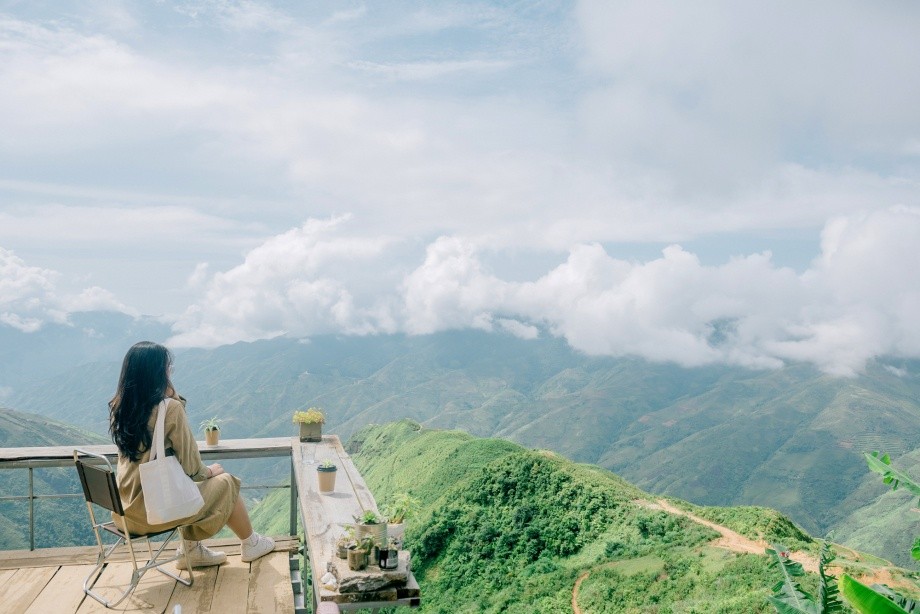Norway: Top 10 Tourist Destinations That You Can Not Miss
Norway is a Scandinavian country encompassing mountains, glaciers, and deep coastal fjords. Oslo, the capital, is a city of green spaces and museums. Preserved 9th-century Viking ships are displayed at Oslo’s Viking Ship Museum. Bergen, with colorful wooden houses, is the starting point for cruises to the dramatic Sognefjord. Norway is also known for fishing, hiking, and skiing, notably at Lillehammer’s Olympic resort.
Norway offers visitors an incredible mix of cultural and natural wonders. From cosmopolitan Oslo to its endless snowcapped mountain peaks and deep fjords, there's no end of choices for travelers in the land of the midnight sun and stunning northern lights, according to PlanetWare.
Add these wonderful tourist destinations in Norway to your bucket list, and try new experiences.
1. Sognefjord
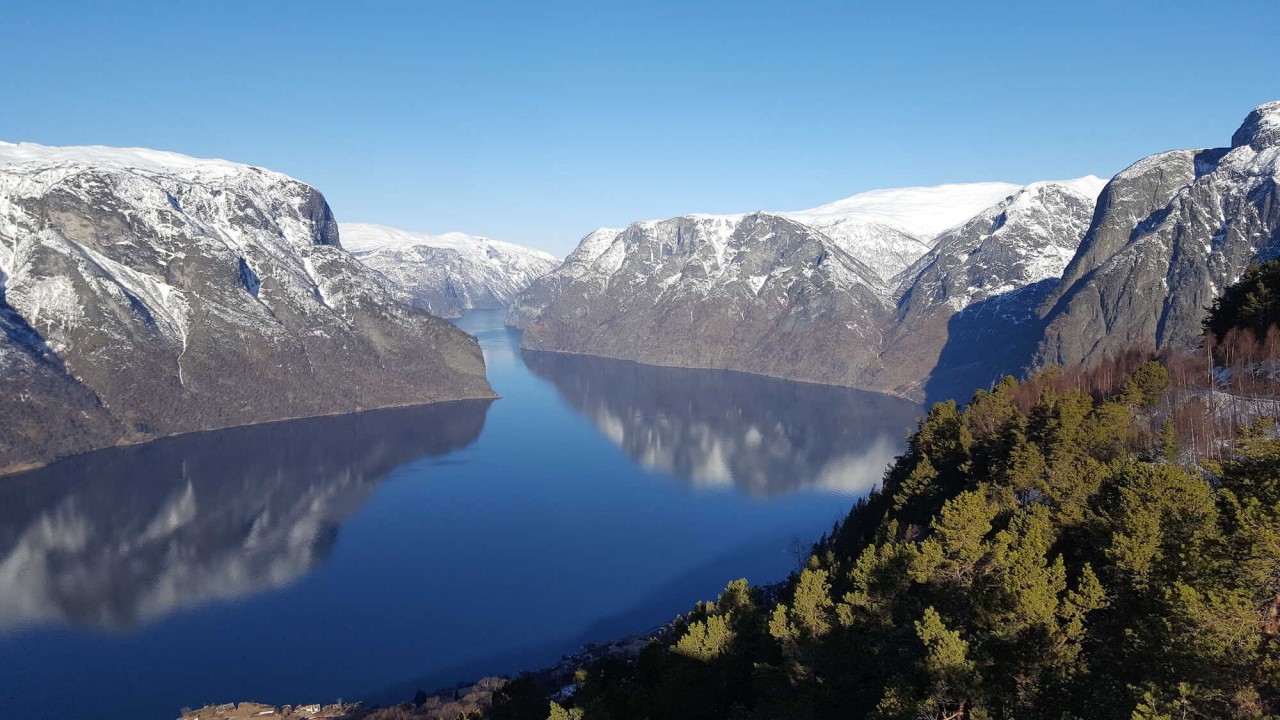 |
| Photo: Norway in a Nutshell |
The Sognefjord (or Sognefjorden in Norwegian) is located on the west coast in Norway. It is called the King of the fjords and is over 200 kilometres long. Though the nickname has been given probably due to its greatness, it has indeed been visited by both King and Queens over the years.
The Sognefjord starts just north of Bergen and stretches about 200 kilometres inland to the village of Skjolden. The Sognefjord has several smaller fjords which branch off the main fjord. And many would say that these are the most spectacular parts of the fjord.
The fjords are created by glaciers way back when, and if you want to see the fjords, Bergen is a great place to start your journey. Bergen is located with the Sognefjord to the north and Hardangerfjord in the south.
The western Norwegian fjords differ from other fjords in that there is also a living cultural landscape with many small settlements where people have lived for thousands of years and still live, and where the lands are still used for grazing and cultivation.
2. Pulpit Rock (Preikestolen)
 |
| Photo: Go Live Young |
Preikestolen or Prekestolen (English: 'The Pulpit Rock', 'Pulpit', or 'Preacher's Chair') is a tourist attraction in the municipality of Strand in Rogaland county, Norway. Preikestolen is a steep cliff that rises 604 meters (1,982 ft) above Lysefjorden. Atop the cliff, there is an almost flat top of approximately 25 by 25 meters (82 ft × 82 ft). Preikestolen is located near the Western part of the fjord and on its Northside.
Tourism at the site has been increasing in the early 21st century, with between 150,000 and 200,000 visitors in 2012, making it one of the most visited natural tourist attractions in Norway. BASE jumpers often leap from the cliff. Due to its increased popularity, the most used path to the site (a 3.8-kilometer (2.4 mi) long hike) was improved by Nepalese Sherpas in 2013.
The old local name of the site is Hyvlatonnå; English: (woodworker's) Plane's Tooth. The name Prekestolen (without the i) was coined around the year 1900 when the local tourist organization, Stavanger Turistforening [no], wanted to promote the site for trekking. The "i" was added later to concord with Nynorsk, the official local form of Norwegian, and the site is now known both locally and officially as "Preikestolen."
The cliff was formed during the ice age, approximately 10,000 years ago, when the edges of the glacier reached the cliff. The water from the glacier froze in the crevices of the mountain and eventually broke off large, angular blocks, which were later carried away with the glacier. This is the cause of the angular shape of the plateau. Along the plateau itself, there continues to be a deep crack. Due to these cracks, the plateau will at some point fall down, but all the geological investigations have revealed that this will not happen in the foreseeable future, and geologists have confirmed the safety of the plateau.
3. Tromsø
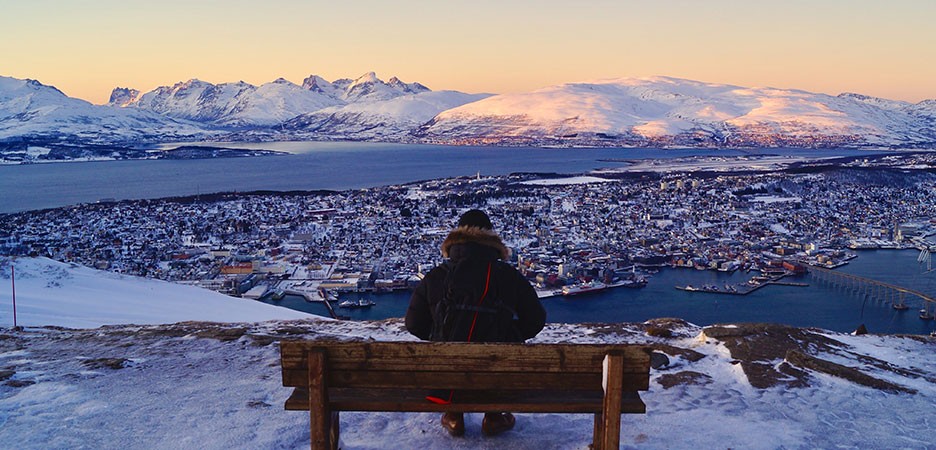 |
| Photo: Norwegian Reward Blog |
Tromsø is a municipality in Troms og Finnmark county, Norway. The administrative center of the municipality is the city of Tromsø.
Tromsø lies in Northern Norway. The 2,521-square-kilometre (973 sq mi) municipality is the 21st largest by area out of the 356 municipalities in Norway. With a population of 76,974, Tromsø is the 12th most populous municipality in Norway. The municipality's population density is 31.1 inhabitants per square kilometer (81/sq mi) and its population has increased by 14.4% over the previous 10-year period. It is the largest urban area in Northern Norway and the third largest north of the Arctic Circle anywhere in the world (following Murmansk and Norilsk). The city center of Tromsø is located on the island of Tromsøya, but the urban area also encompasses part of the nearby mainland and part of the island Kvaløya. Tromsø is 350 kilometers (217 mi) north of the Arctic Circle. Tromsøya is connected to the mainland by the Tromsø Bridge and the Tromsøysund Tunnel, and to the island of Kvaløya by the Sandnessund Bridge.
The city center contains the highest number of old wooden houses in Northern Norway, the oldest dating from 1789. Tromsø is a cultural hub for the region, with several festivals taking place in the summer.
4. Lofoten Islands
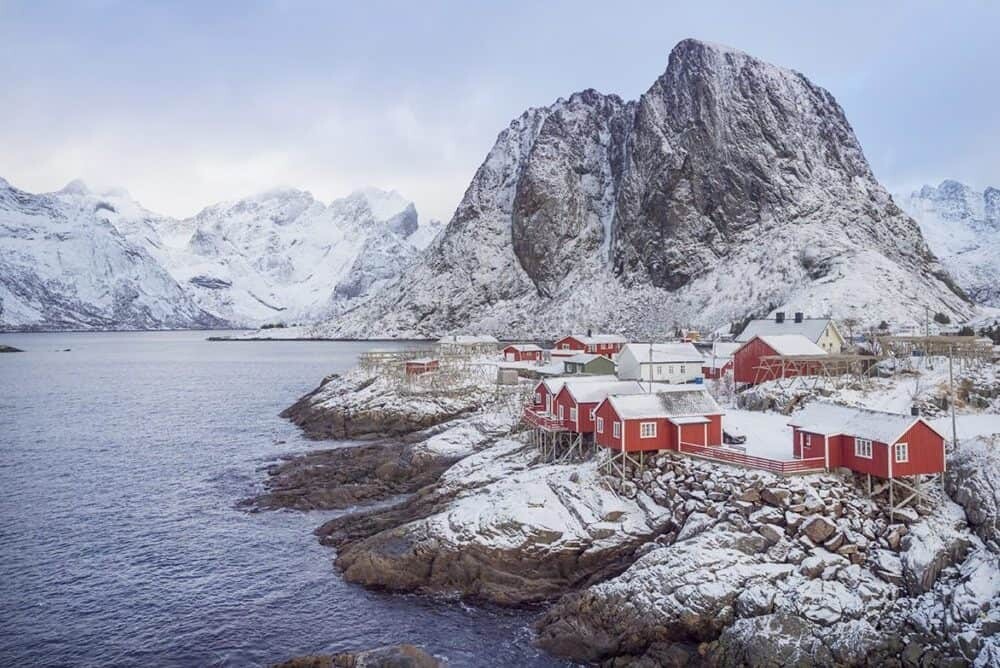 |
| Photo: The Wandering Lens |
Lofoten is an archipelago and a traditional district in the county of Nordland, Norway. Lofoten has distinctive scenery with dramatic mountains and peaks, open sea and sheltered bays, beaches, and untouched lands. There are two towns, Svolvær and Leknes - the latter is approximately 169 km (105 mi) north of the Arctic Circle and approximately 2,420 km (1,500 mi) away from the North Pole. The archipelago experiences one of the world's largest elevated temperature anomalies relative to its high latitude.
Lofoten (Old Norse: Lófót) was the original name of the island Vestvågøya. The first element is ló (i.e., "lynx") and the last element is derived from Norse fótr (i.e., "foot"), as the shape of the island must have been compared with that of a lynx's foot. (The old name of the neighboring island Flakstadøya was Vargfót, "wolf's foot", from vargr "wolf".)
Lofoten offers many rock climbing and mountaineering opportunities. It has 24 hours of daylight in the summer and has Alpine-style ridges, summits, and glaciers, but at a height of fewer than 1,200 meters (3,900 feet). The main center for rock climbing is Henningsvær on Austvågøya.
The main areas for mountaineering and climbing are on Austvågøy and Moskenesøya. Moskenesøya features remote and serious mountaineering whereas Austvågøy is a very popular area for rock climbing.
5. Viking Ship Museum, Oslo
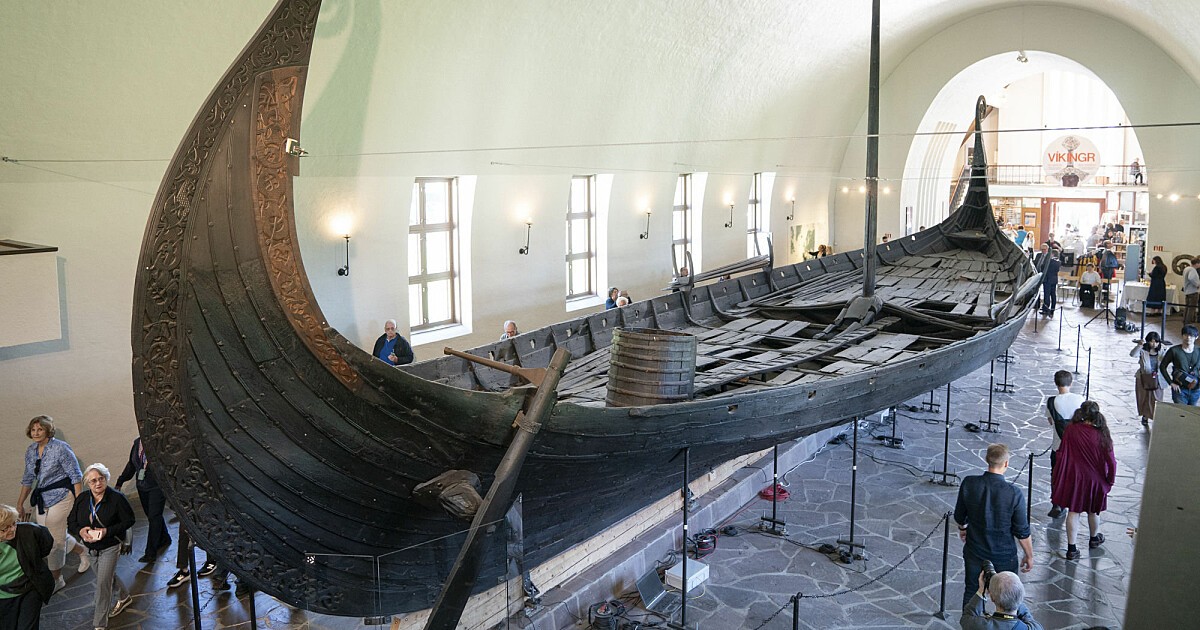 |
| Photo: Sciencenorway |
The largest of Norway's museums dedicated to their seafaring ancestors, the Viking Ship Museum (Vikingskipshuset på Bygdøy) in Oslo features three 9th-century Viking vessels, each of which had been laid to rest as burial chambers for prominent Vikings.
The largest of these, the 70-foot Oseberg Ship, was built around AD 800. It contained a chieftan's wife and two other women along with many items that give insight into Viking life.
The museum is also home to the Gokstad Ship, which is an impressive 23 meters long, and the Tune Ship. Visitors can also view several exhibits and films that focus on the importance of maritime life for that culture.
The Viking Ships Museum is operated by the Museum of Cultural History, as is Oslo's Historical Museum, which contains artifacts from around the world and throughout history, from Egyptian mummies to the history of gold coins. One of Oslo's top attractions, it is also home to an expanding Viking Age exhibit, which contains a rare well-preserved Viking helmet, according to PlanetWare.
6. Svalbard Islands
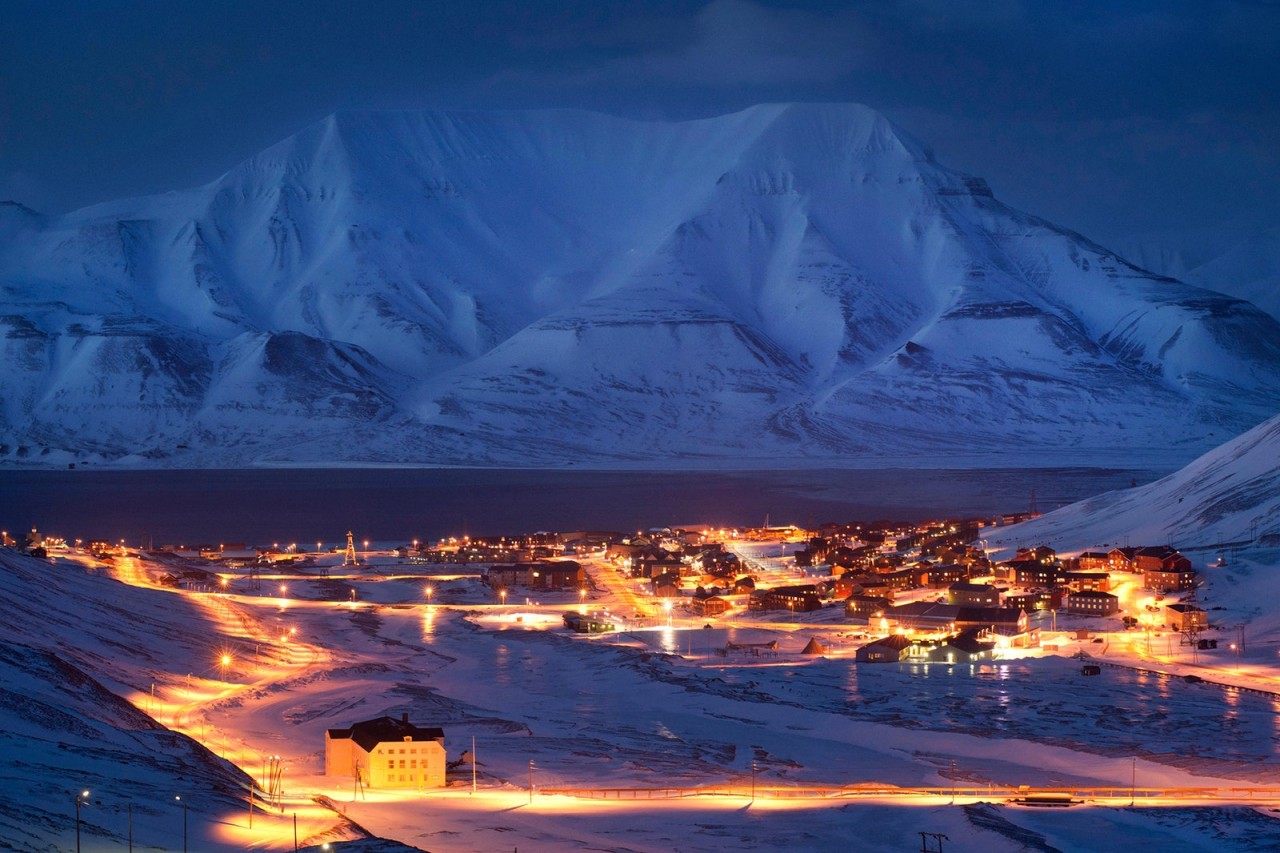 |
| Photo: Vogue |
Svalbard, also known as Spitsbergen, or Spitzbergen, is a Norwegian archipelago in the Arctic Ocean. North of mainland Europe, it is about midway between the northern coast of Norway and the North Pole.
Approximately 60% of the archipelago is covered with glaciers, and the islands feature many mountains and fjords. The archipelago has an Arctic climate, although with significantly higher temperatures than other areas at the same latitude. The flora is adapted to take advantage of the long period of midnight sun to compensate for the polar night. Svalbard is a breeding ground for many seabirds and is home to polar bears, reindeer, the Arctic fox, and certain marine mammals. Seven national parks and 23 nature reserves cover two-thirds of the archipelago, protecting the largely untouched, yet fragile, natural environment.
While part of the Kingdom of Norway since 1925, Svalbard is not part of geographical Norway; administratively, the archipelago is not part of any Norwegian county, but forms an unincorporated area. This means that it is administered directly by the Norwegian government through the appointment of a governor, and is a special jurisdiction subject to the Svalbard Treaty that is outside of the Schengen Area, the Nordic Passport Union, and the European Economic Area. Svalbard and Jan Mayen are collectively assigned the ISO 3166-1 alpha-2 country code "SJ". Both areas are administered by Norway, though they are separated by a distance of over 950 kilometres (510 nautical miles) and have very different administrative structures.
7. Polar Museum, Tromsø
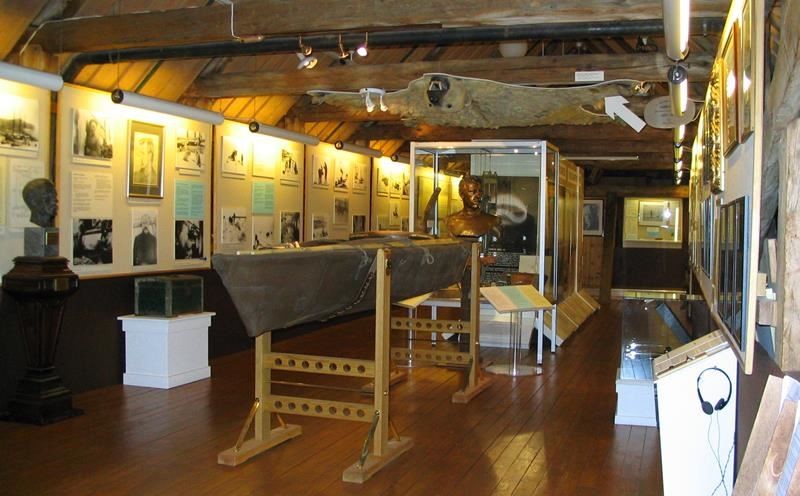 |
| Photo: Visit Tromso |
Fittingly for a town that was the launchpad for many pioneering expeditions to the North Pole, Tromsø's Polar Museum is an old-fashioned romp through life in the Arctic, taking in everything from the history of trapping to the ground-breaking expeditions of Nansen and Amundsen. There are some fascinating artifacts and black-and-white archive photos; though the stuffed remains of various formerly fuzzy, once-blubbery polar creatures are rather less fun...and there are lots of them.
The museum is in a harbourside building that served as Tromsø's customs house from 1833 to 1970.
8. Vigeland Sculpture Park, Oslo
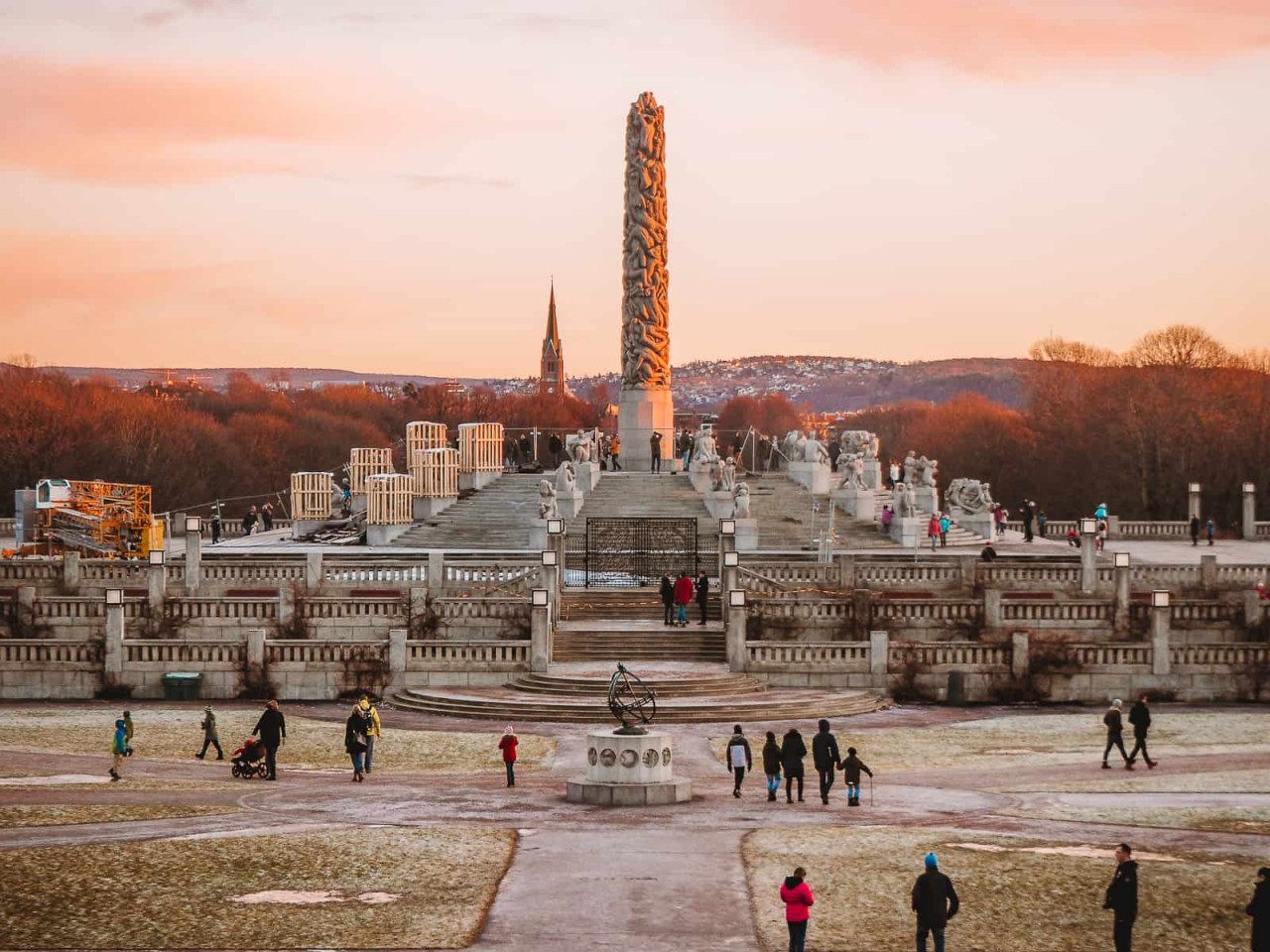 |
| Photo: Third Eye Traveller |
The sculpture park is Gustav Vigeland's life work, comprising over 200 sculptures in granite, bronze, and wrought iron. It was installed mainly in the period 1940-1949 but is nevertheless a result of over 40 years of work. The starting point for the park is Vigeland's Fountain, which was originally meant to be placed at Eidsvolls plass in front of the Parliament. These plans were never realized, and the Fountain later became part of Vigeland's more extensive park plans.
In 1924, the city council agreed that the sculptor's monumental Fountain was to be erected in Frogner Park. At that time, Vigeland's park project had expanded to include the Monolith and the Bridge.
9. Lillehammer
The area has been settled since the Norwegian Iron Age. It is mentioned in the old sagas at "Litlikaupangr" (the small trading place" and as "Litlihamarr" (the small Hamar) - to distinguish it from the town and bishopric of Hamar. The farm that gave Lillehammer its name has always been called Hammer, as has the family that lived there. It is also mentioned as a site council in 1390. Lillehammer had a lively market by the 1800s, and obtained rights as a merchant town on August 7, 1827, at which point there were 50 registered residents within its boundaries.
The town of Lillehammer was established as a municipality on January 1, 1838. The rural municipality of Fåberg was merged with Lillehammer on January 1, 1964. The town center is a well-preserved late 19th-century concentration of wooden houses, which enjoys a picturesque location overlooking the northern part of lake Mjøsa and the river Lågen surrounded by mountains. The main street is excellent for people-watching, shopping, and dining.
Lillehammer was granted its town charter as recently as 1827. Nonetheless, its coat of arms bears witness to a stirring medieval deed that changed the course of Norwegian history.
Lillehammer's heraldic bearing, a Viking on skis, is the only coat of arms in the world to feature a skier. The skier dates from the early 13th century when Norway was torn by civil war between the Baglere and Birkebeinere, who supported rival claimants to the Norwegian throne.
10. Geirangerfjord
 |
| Photo: Hurtigruten |
The Geiranger Fjord is a fjord in the Sunnmøre region of Møre og Romsdal county, Norway. It is located entirely in the Stranda Municipality. It is a 15-kilometre (9.3 mi) -long branch off the Sunnylvsfjorden, which is a branch off the Storfjorden (Great Fjord). The small village of Geiranger is located at the end of the fjord where the Geirangelva river empties into it.
The fjord is one of Norway's most visited tourist sites. In 2005, it was listed as a UNESCO World Heritage Site, jointly with the Nærøyfjorden. This status was challenged by the disputed plans to build power lines across the fjord.
Along the fjord's sides there lie a number of now-abandoned farms. Some restoration has been made by the Storfjordens venner association. The most commonly visited among these are Skageflå, Knivsflå, and Blomberg. Skageflå may also be reached on foot from Geiranger, while the others require a boat excursion. The fjord is also host to several impressive waterfalls such as Seven Sisters Falls.
 | Top 10 Movies to Watch on New Year's Eve of 2022 Enjoy these entertaining and heartfelt flicks carefully picked out for your best 2022 New year experience. |
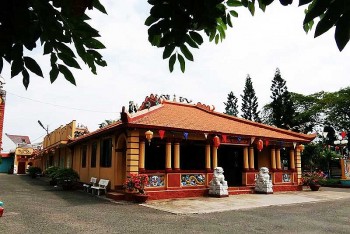 | The Best Vietnamese Trending Destinations In 2022 In a survey this year, Booking.com has revealed its top 10 Vietnamese destinations to visit in 2022, including both unique and lesser-known sites which are ... |
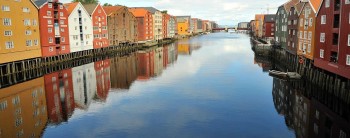 | The Most Fascinating Cities In Norway Norway, a beautiful country with many extraordinary tourist destinations, wonderful culture, delicious food, has some of the best cities in the world. |
Recommended
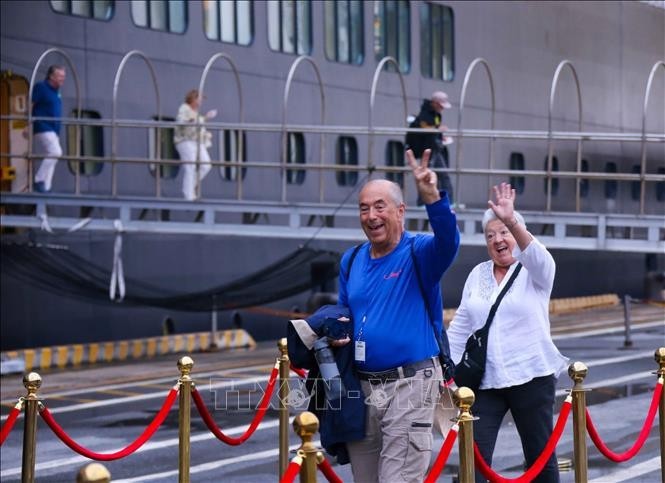 Travel
Travel
International Arrivals to Vietnam Hit New Record in 2025, up Over 20%
 Travel
Travel
New Year’s Day 2026: Vietnam’s Tourism Makes Impressive Start with 3.5 Million Visitors
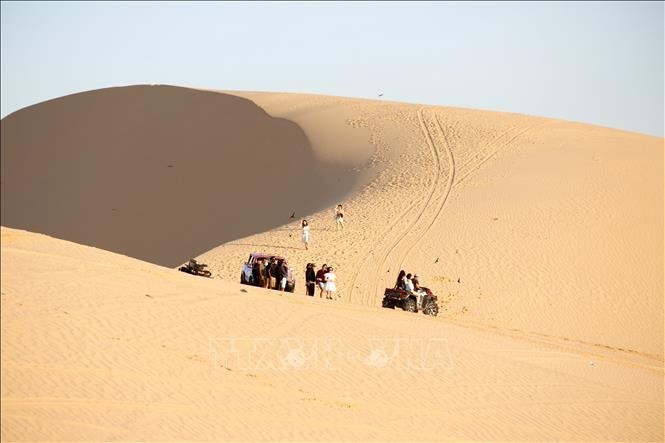 Travel
Travel
Vibrant Destinations for New Year 2026 Holiday
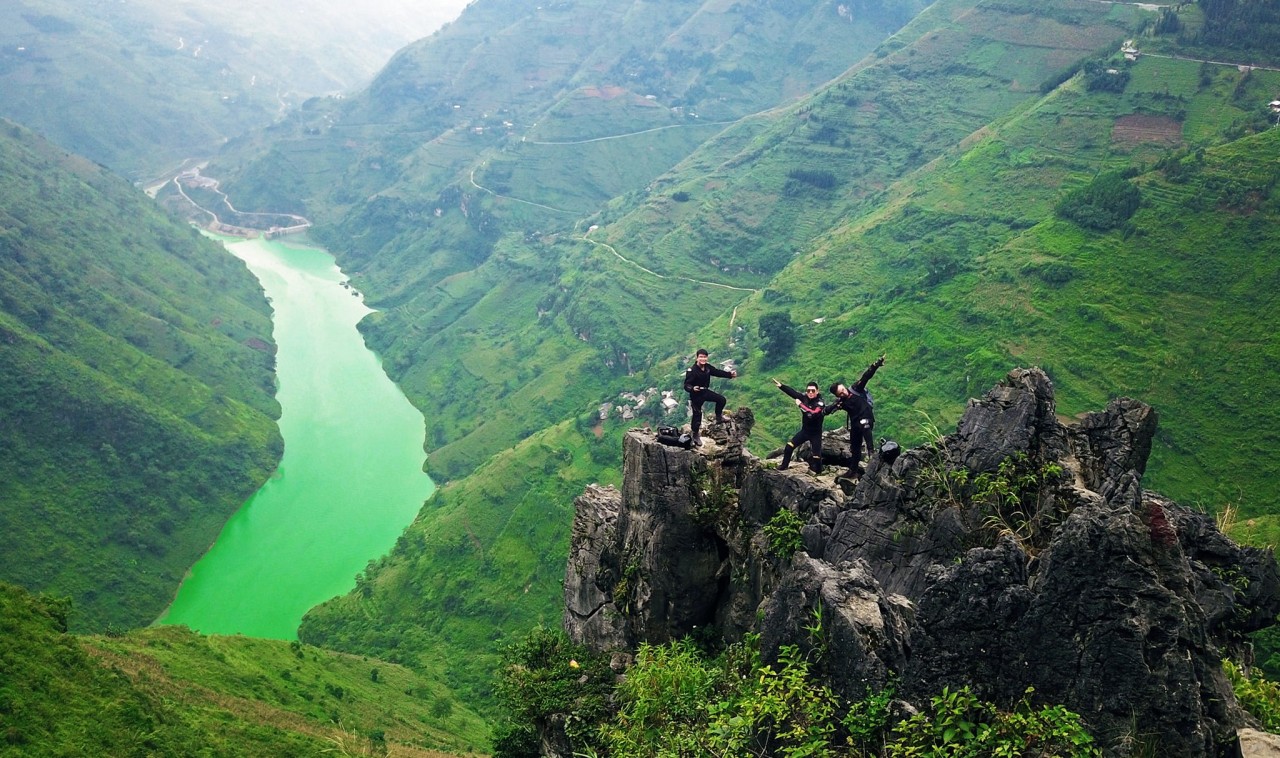 Travel
Travel
Tourism Industry: 2025's Bright Spot of Economic and Social Growth
Popular article
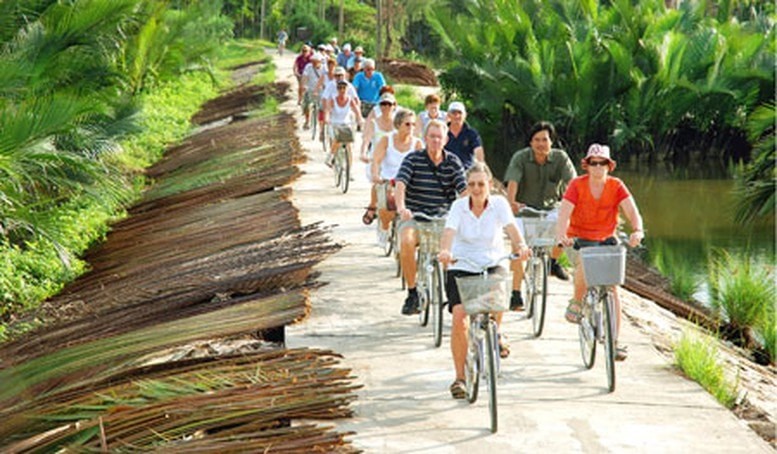 Travel
Travel
Vietnam Tourism Sets New Record with Over 19 Million International Arrivals
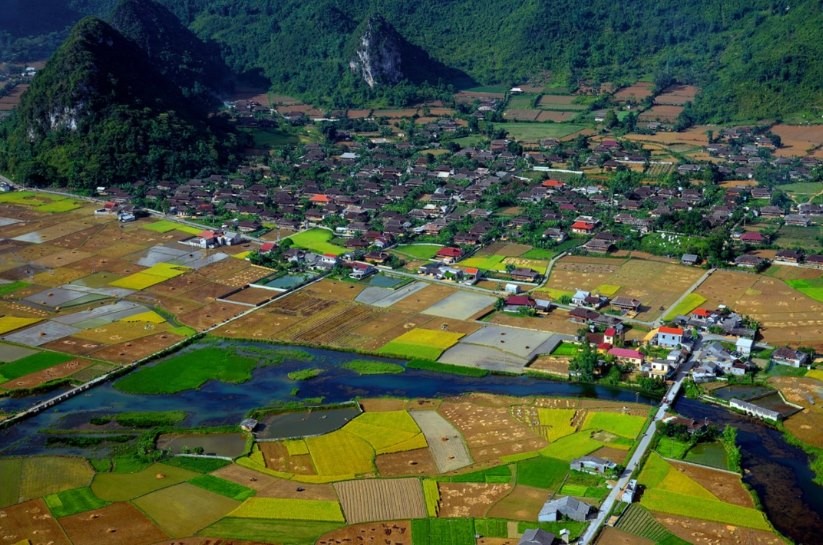 Travel
Travel
GMS International Conference with Focus on Sustainable Tourism Development
 Travel
Travel
International Visitors in South Africa Experience Vietnamese Cuisine
 Travel
Travel






